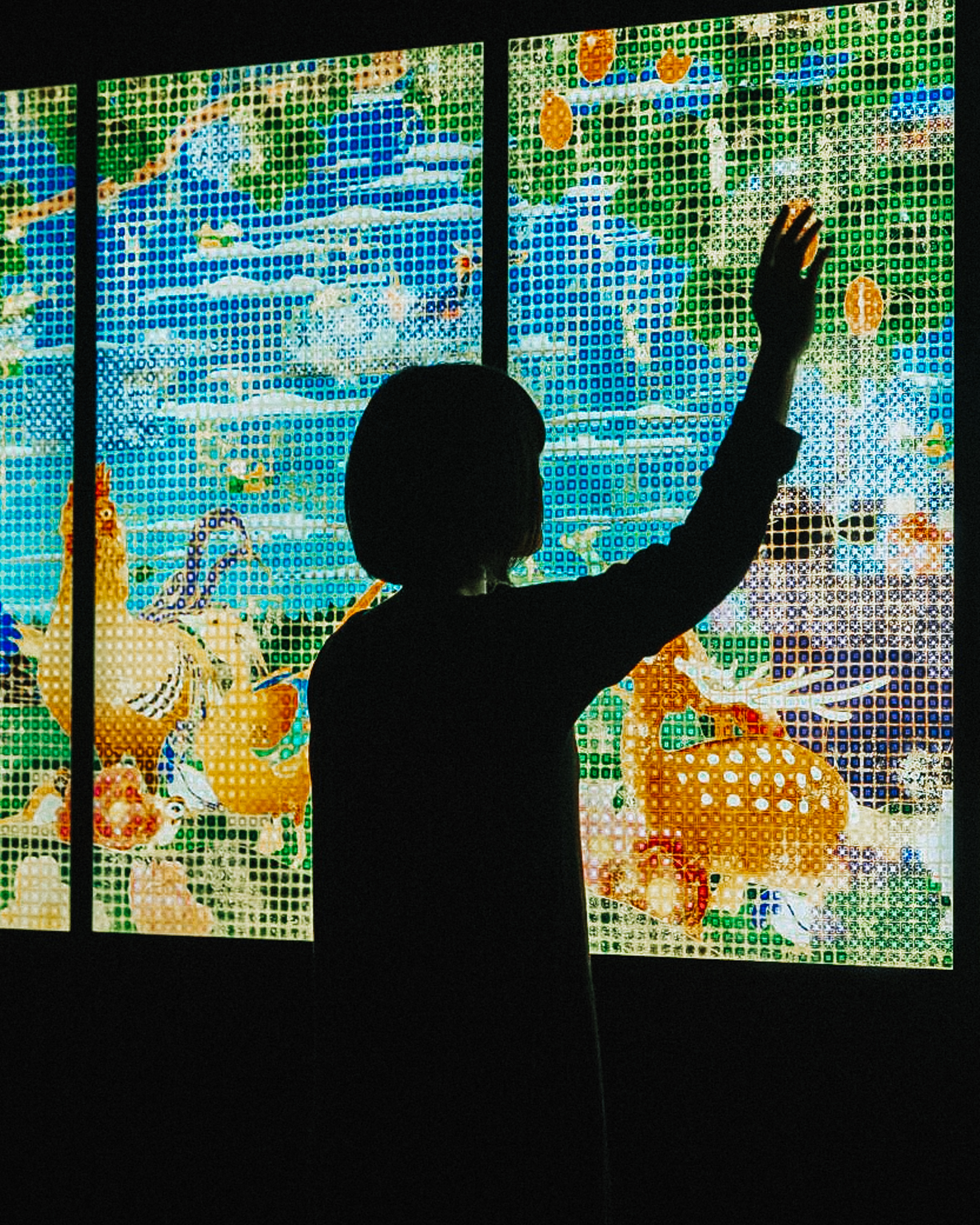
07 Mar teamLab and Jakuchū’s : United, Fragmented, Repeated and Impermanent World
Itō Jakuchū (1716–1800) was an early modern Japanese painter who was active in Kyoto in the mid-Edo period. Jakuchū has left us with a unique style of painting in which the surface is made up of a grid of tens of thousands of squares that are individually colored. This work was inspired by the screen paintings Birds, Animals, and Flowering Plants and Trees, Flowers, Birds and Animals.
Jakuchū’s square paintings remind us of computer-generated pixel art. It has been proposed that Jakuchū’s squares pictures were inspired by industrial production constraints in the designs of Nishijin (traditional high-quality silk fabric that is woven in Nishijin, Kyoto). Pixel art was also born from functional limitations. Those functional limitations no longer exist but pixel art is still a very popular form of expression. This is perhaps why we feel an intuitive digital sense of Jakuchū’s square works. The colours of Jakuchū’s work are the result of the optical phenomena of visual mixing of colour combinations within the squares. It appears as if Jakuchū understood the optical mixing of colours at a time before Impressionism and Pointillism.
This artwork was created in a virtual 3-D space in which 3-D animals move. The space was then converted into what teamLab calls ultra subjective space. Then, the colour in the 3-D space is split by the colour pattern of the squares. For example, if the pattern of a square is coloured in red and blue, that part corresponds to purple in the three-dimensional space.
The squares of the screen are fixed while the space continues to move, and thus the colour inside the squares is on a different time axis from the space. Seen as a whole from a distance, brilliantly shining colours occur, and the world of plants and animals in space will move at a slow time axis. When viewed up close, the colours divided by the finely drawn patterns of each square will change on a rapid time axis. Two-time axes co-exist in this work.
In addition, parts of the image squares are filled in with the most frequent colour in the squares, forming an abstract world. Furthermore, when a visitor stands in front of the work, the squares near them are similarly painted. The plants and animals move in space but are abstracted by the fixed squares on-screen, creating a new visual expression through pixel art.


No Comments